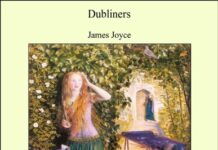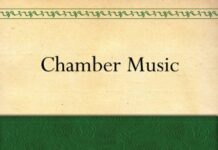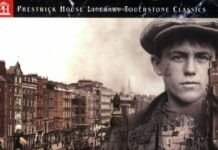
Ebook Info
- Published: 2012
- Number of pages: 532 pages
- Format: EPUB
- File Size: 2.74 MB
- Authors: James Joyce
Description
Finnegans Wake is the most bookish of all books. John Bishop has described it as ‘the single most intentionally crafted literary artefact that our culture has produced’. In its original format, however, the book has been beset by numerous imperfections occasioned by the confusion of its seventeen-year composition. Only today, by restoring to our view the author’s intentions in a physical book designed, printed and bound to the highest standards of the printers’ art, can the editors reveal in true detail James Joyce’s fourth, and last, masterwork. This edition is the summation of thirty years’ intense engagement by textual scholars Danis Rose and John O’Hanlon verifying, codifying, collating and clarifying the 20,000 pages of notes, drafts, typescripts and proofs comprising James Joyce’s ‘litters from aloft, like a waast wizzard all of whirlwords’ (fw2, 14.16-17). The new reading text of Finnegans Wake, typographically re-set for the first time in its publishing history, incorporates some 9000 minor yet crucial corrections and amendments, covering punctuation marks, font choice, spacing, misspellings, misplaced phrases and ruptured syntax. Although individually minor, these changes are nonetheless crucial in that they facilitate a smooth reading of the book’s allusive density and essential fabric.
User’s Reviews
Editorial Reviews: About the Author Danis Rose is principal editor of the forthcoming critical edition and electronic hypertext of Finnegans Wake. His publications include The James Joyce Archive: Volumes 28-63 (New York, 1977-78; with David Hayman and John O’Hanlon); The Index Manuscript (Colchester, 1978); Understanding Finnegans Wake (New York, 1982, with John O’Hanlon); The Lost Notebook (Edinburgh, 1989; with John O’Hanlon); The Textual Diaries of James Joyce (Dublin, 1995); and Ulysses: A New Reader’s Edition (Mousehole, 2004). He was born in Dublin, where he now lives. John O’Hanlon has collaborated with Danis Rose in most of the Joyce-related projects undertaken by him, in particular in the preparation of the extensive electronic hypertext of Finnegans Wake. His expertise is in mathematics and logic, and he has been primarily responsible for the origin (or adaptation) and coherence of the programs and protocols essential to Rose’s hypertext constructions.
Reviews from Amazon users which were colected at the time this book was published on the website:
⭐Now look here ! No, over here. Bit to the left. That’ll have to do. I’ve just made the most important contribution to English Letters in the last fifty years. I really am quite chuffed. The wife’s awfully proud of me too. James Joyce’s “Finnegans Wake” is the Greatest Book in the English Language !! The simple ingestion of thc, in the customary manner, will make the words bound off the page at you, barking and licking your face like Stephen Fry ! Open at any page. Takes about thirty seconds and you’re in. The result is infinitely reproducible, and thus quite nicely scientific. “This is why he wrote it” will occur to you. In the end you can discard the thc, or not, as you choose. It is Music written with Words as the Notes, so that each Word, carrying a freight of sound and image, bounces off the previous and subsequent Word (sound/image) at angles that are utterly unheard of before or since. Open any page. And it will make you see exactly what an extraordinary discovery Joyce had made. This is not a strategy to get you sequentially from pages 1 – 628, unless you are great deal more fortunate in your potion than the average citizen. As a Literary Contribution it makes a very short thesis. (Or a very long one in tiny writing.) Burroughs, admitting to writing some impenetrable stuff himself, said Joyce, who he loved, ‘had spent 20 years writing a book no-one could read’. Burroughs, in the Shakespeare Squadron, words and thc both. But he did not have Music : ‘I really don’t have much interest in music at all. Not at all.’ And Burgess didn’t have the Bob Hope.All you need otherwise is a love of music and of playing with language. Viv Stanshall might easily come to mind. The Music is in the Words of “Finnegans Wake” like the Bubbles are through Champagne. 628-pages of fireworks. ‘An enormous expense of spirit’. It is said to have killed James Joyce.It is not unseemly to need a leg-up to Joyce’s level, although practical advice seems oddly at variance with academic protocol. None of us naturally fly at that altitude. And he himself was immensely taken with intellectual stimulants – alcohol being the obvious. So there it is. Mobs will be waylaying shipments of “Finnegans Wake” any tick of the clock now !(After all, this is the story of the Chinese translation (S.M.Herald. 6/2/2013) : “Backed by an elaborate billboard ad campaign, the first volume of “Fennigen de Shouling Ye” sold out its first run of 8000 copies and reached No.2 on a prestigious bestseller list in Shanghai, second only to a biography of Deng Xiaoping”.)
⭐This so-called “restored” Finnegans Wake should be set along side other fradulent editions of Joyce’s works like the Gabler edition of Ulysses. Remember when that book was called the “corrected” Ulysses to the acclaim of interventionist editors? Joyce’s compositional technique was one of ever revising his revisions. So, of course, “errors” were bound to occur. But as a writer he was intimately involved with virtually every aspect of the publication of his works. And besides, like he said, “the man of genius makes no mistakes, his errors are volitional and portals of discovery.”Joyce had ample opportunity to correct any “mistakes” he found in Ulysses, but did no such thing. As for Finnegans Wake, Joyce took that opportunity and made numerous corrections to the first edition which were subsequently incorporated into the text. We now have the book the author authorized.But along come these editors who think they are as creative as the artist. And as to Mr. Rose’s editorship, he has already published a so-called readers edition of Ulysses where he perniciously punctuated Molly Bloom’s famously flowing soliloquy.The only use of this book is as an arbitrary list of earlier manuscripts’ possible intentions. But readers interested in the book Joyce wanted us to read would be better off with the recently published Oxford Worlds Classic edition. (This book, by the way, has a list of what the editors think are compositional errata. But they are listed as an addendum: they do not to corrupt Joyce’s text.)
⭐In this ‘restored’ version of Finnegan’s Wake, by far the most difficult of the experimental fiction of James Joyce, Joyce scholars Danis Rose and John O’Hanlon (both Irish) proffer to the public a ‘restored’ version of the novel that claims to incorporate some 10,000 or so ‘corrections’ and emendations to the 1939 text that is still considered the ‘standard’ version of FW by most scholars. This ‘Restored’ version, much like the ‘corrected’ versions of other works such as Ulysses by H.W. Gabler, has caused considerable controversy within the world of scholars and also reviewers and fans of Joyce generally. Is it really plausible to ‘correct’ a work Joyce spent seventeen years carefully writing (and arguably longer thinking about and conceiving in his mind)? Would such a ‘revised’ edition really be an accurate depiction of the work or what the artist intended, or is it simply a reflection of the more mediocre mind of the editor whose changes to the work are about as good as an unskilled painter ‘re-doing’ a Florentine painting by Boticelli or Fra Angelo? Who has the ‘right’ to make such decisions anyway?None of these questions are easy to answer and one has to wonder whether an attempt to ‘restore’ FW is feasible or even desirable, or whether such attempts are really simply designed to capture an expensive segment of the ‘Joyce’ industry market by offering a re-hashed version of material already published. (Plenty of book publishers already do this, merely re-printing old editions of Joyce’s work with little serious attempt to engage with the text or update the critical apparatus). Despite the encouraging words of Seamus Deane, the Irish literary scholar (and editor of the 2000 Penguin Classics version of FW) at the end that the restored version is clearer and brings the novel to light, I have my questions about the choices and decisions made.However, on reading the book itself the restored version of FW definitely has more clarity and is easier to read than the 1939 ‘classic’ version. Joyce’s puns and circular style of writing become much clearer in the restored version and as a whole the text becomes slightly more intelligible. But is this what Joyce really wanted? The restored text seems to have lost much of the vitality of the older version, especially in the very carefully orchestrated punning and word-play which is a central feature of the novel and no doubt is central to Joyce’s intentions. This text is slightly more readable, however the integrity of the editorial process and textual changes have to be seriously questioned, along with the relative lack of attached critical apparatus to the text. Newcomers to the Wake are better advised to purchase other far less expensive versions such as the 2000 Penguin Classics version, the very cheap yet good version published by Len Platt under the imprint of Wordsworth Classics, or the easily available and very readable Oxford World Classics version which like the other books in the same series, has excellent critical material and footnotes and a list of textual changes from the JJ Archive. Caveat Emptor with this version.
⭐This is a difficult book to review, not merely because of its content. If you are not yet familiar with the strangeness of Joyce’s final literary effort, then Rose’s edition is probably – at least for now – a bad place to start, as it is the “odd one out” and most people are familiar with the 1939 edition (which virtually every edition except this one reprints). If you are familiar with the work, then you will realise what a seminal statement Rose’s claim to have restored the original text is.Let me first of all address two points raised by Richard W. Cowdell in his review. Richard asks whether “the timing of this issue is a cynical attempt to re-establish copyright through a new text.” As Richard points out, there are far cheaper versions of the text available by now, probably because Joyce died in 1941 and copyright of published works expires after 70 years. Yet I doubt that Rose’s edition is likely to represent an organised effort to somehow establish a “new” copyright. Up until the beginning of this year, copyright of “Finnegans Wake” was with the James Joyce Estate, with which Rose has been involved in a lengthy court case over his 1997 edition of “Ulysses” (ultimately forcing him to reverse a number of amendations in the 2004 reprint of that edition). Presumably, to cooperate with Rose would be the last thing the Estate would intend to do if they wished to prolong their influence on the availability of “Finnegans Wake.” Similarly, the last thing Rose would want to do would be to have this edition officially acknowledged as a new version in the sense of a new text. (For in that case, the Estate might sue him for basing his emendations on material not contained in the 1939 edition, but only in galley proofs, drafts, and manuscripts, for which copyright has not expired yet. Such material editors may only use without risking breach of copyright as long as the result of their editorial work remains a new edition of the already published text, as opposed to a new text.)The second issue Richard mentions is that “A list of the amendments and page alignments as appendices would have been helpful.” I fully agree with this – in fact, my main problem with this edition is that it performs a groundbreaking, daring, and long-due enterprise in textual editing, and yet withholds from its readers all information on the textual scholarship that went into its making. This, in my opinion, is downright absurd.There is virtually no critical apparatus in this edition except for introductory notes, one by Deane and one by Rose and O’Hanlon, as well as three essays: one by Gabler (famous for his 1984 edition of “Ulysses”), one by Greetham, and one by Rose and O’Hanlon. Gabler, in his contribution, expresses regret that there is no apparatus to be found in this edition, but then somewhat constrainedly suggests that this allows for the new text to be encountered in a more neutral way. Rose and O’Hanlon give tantalising explanations of the admittedly path-breaking methods they used to create a digital, hyperlinked isotext, but then argue that for reasons of readability, any trace of the complexity of this editorial construct had to be erased, thus leaving us with the clean reading text found in this book. As an explanation, they offer the view that books should be enjoyed rather than dissected.As far as I am concerned, the last claim is simply laughable. Far be it from me to suggest that the 1939 edition is a holy edifice, no letter of which should be changed. Almost everyone who has looked into the matter acknowledges that there are myriad mistakes in that particular edition which have been perpetuated over the years through the practice of printing more or less photographical reproductions of the original book, plus or minus a small number of errata which Joyce compiled. But what Rose is doing here is to make a huge number of enormously complex editing decisions, and then presenting the final result expecting that the only explanation required is a general statement of his editing rationale.This is first of all highly counter-productive, as criticism on “Finnegans Wake” would no doubt profit from having available, and compiled into a single resource, all the minute textual details Rose must have come across during his work on this edition. To do all this work and then not publish a single fragment of it is like going to Mars and not bring back a single probe.Secondly, the procedure frankly smacks of lack of academic integrity. If Rose wants his edition to be taken seriously by scholars, he needs to publish a companion volume giving the textual background of his amendations (similar to what Gabler did for his “Ulysses” edition). Then, his readers will be in a position to comprehend his decisions, and occasionally, to disagree. This is not to say that Rose has not achieved a magnificent breakthrough. Nor, again, is it to suggest that he somehow does not have the right to change things if sound editing requires him to do so. But it is only by rendering his editing procedures thoroughly transparent and by giving the sources of his decisions that he can make this breakthrough into a cooperative contribution to the sustained effort towards interpreting “Finnegans Wake.” As the take-it-or-leave-it package that it currently is, Rose’s edition remains unhelpful and oddly stubborn in its pretension to be a mere innocent suggestion when clearly it is an outstanding, provocative milestone.
⭐I’d like to add to the existing review, very powerful rendering of this work of Joyce. The special editions which are available through the editors contain features that Penguin has chosen to leave out. These are Diaereses and other indicative marks intended to enhance pronunciation, its a pity that they have been left out of this edition. I love this book. Unfortunately Amazon.ca sent me a copy badly packaged so it got a bit battered when I received it, but I’m sure they will put that right.
⭐Whilst it is great to see a ‘corrected’ Finnegans Wake a chance has, sadly I think, been missed.1. As so many guides to the book refer to it, it would surely have been better to paginate the book as that of the original Faber edition. It would also have been easier to see just what has been changed. In a book as dense as FW and unless the correction is obvious (as that to ‘The Ballad of Persse O.Reilly (pg 35 Faber pg 44)) it is well-nigh impossible to recognise them.2. The typeface chosen is poor and is very tiring on the eye. With such a dense novel as FW, which is difficult to read anyway, the reader needs a larger, clearer typeface than we are given here. To be fair, when Faber reset the book the print became even smaller and virtually unreadable and that is probably why most readers seek out second hand copies of the earlier editions (which do have an errata at the back).3. A list of the amendments and page alignments as appendices would have been helpful. Perhaps that is forthcoming as reading this edition means that the guides which refer to the pagination of the early Faber edition are now defunct.4. As many readers of the Wake annotate their copies (I use the Faber 1959 edition which is covered in notes) it would have been preferable to print on the left hand page only and leave the right hand page free for notes (or vice-versa for left-handed readers).5. The cynic in me does wonder whether, given that the novel is available on Kindle very cheaply and for £1.99 from Wordsworth Classics, the timing of this issue is a cynical attempt to re-establish copyright through a new text (the composer Stravinsky was rather good at this creating new (reduced- or re- orchestrations) ‘versions’ of his early music to lengthen copyright). We really do need to see just what has been changed and why.I may well persevere with this edition but it is more likely I will return to my well-thumbed and ‘dropping-to-bits’ Faber edition which is so much easier on the eye and encourages reading. This edition, I feel, does not.Had it not been for the above I would have given 5 stars, the best I can manage is 3.
⭐James Joyce devoted 16 years to the “Work in Progress” that was published in 1939 as Finnegans Wake. The new “restored” edition published by Penguin Classics represents an alternative outcome of Joyce’s process, thanks to an even longer process of investigating the drafts and notebooks he left behind. Editors Rose and O’Hanlon (along with other scholars) have been following Joyce’s voluminous paper trail for over 70 years now, and out of that deep immersion have produced a text which arguably realizes Joyce’s intentions better than the first edition did.As the editors explain in their Preface and Afterword, this is an alternative to the original edition, not a replacement for it. And it’s meant for readers, not mainly for other specialists. If you found Joyce’s masterpiece unreadable before, this new edition won’t change your mind — but if you’re familiar with it, you will probably notice the difference even in the first few pages. Among the 9000 changes to the original printed text, some are corrections of definite mistakes that had been overlooked, even by Joyce himself, who was nearly blind by the time he made the “author’s corrections incorporated in the text” of the 1958 printing, the one i’ve been enjoying for about 40 years now. But most are better described as alternate readings which could just as well (or better) have emerged from Joyce’s complex process, even though the previous readings were not simply wrong.This “restored” edition might be even better described as “refreshed”. It’s not meant for scholars who want to see the reasons for the changes or systematically compare the two alternative texts, but for readers who want a fresh experience of the Wake, whether they’ve been through it before or not.For this edition the whole book has been totally reset, which has never happened before. The page numbers don’t correspond to the old one — we have 493 pages instead of the 628 of earlier printings, to which the standard citation method refers — and some have complained about this, but it shouldn’t bother the average reader (if there is such a beast as an average reader of Finnegans Wake). Apparently scholars referring to this new edition will cite it as “FW2” for short. The format is larger while the font size appears to be the same (a bit too small in my opinion), hence the smaller number of pages. A couple of appendices explaining the project that resulted in this edition are included, along with the aforementioned Preface and Afterword, but the rest is all pure Joyce.I’m about to begin my third wander through the entire Wake, and with this edition in hand, i’m anticipating untold wonders and joys of night-revelation. That old shapeshifter is more alive than ever.
⭐……pity that its not been set to have the same pagination as the original. It “feels” like completely different book. Great piece of work though to revise the Wake like that.P.S. wish folk would stop sticking price labels on the back of books, difficult to remove and a risk of damage.
Keywords
Free Download Penguin Classics The Restored Finnegans Wake in EPUB format
Penguin Classics The Restored Finnegans Wake EPUB Free Download
Download Penguin Classics The Restored Finnegans Wake 2012 EPUB Free
Penguin Classics The Restored Finnegans Wake 2012 EPUB Free Download
Download Penguin Classics The Restored Finnegans Wake EPUB
Free Download Ebook Penguin Classics The Restored Finnegans Wake





